Categories
- Uncategorized
- Brands
- Aspark
- Abarth
- AC
- ACMAT
- Acura
- Adler
- AEC
- Aero
- Aero Flite
- Aerocar
- AGF Serval
- Airstream
- Aiways
- Alamagny
- ALCA
- Aleko
- Alfa Romeo
- Allard
- Alpina
- Alpine
- Alvis
- AMC
- AMG
- Amilcar
- Amphicar
- Anadol
- Armstrong Siddeley
- Arnolt
- ARO
- Artz
- Aston Martin
- Auburn
- Audi
- Aurus
- Austin
- Austin-Healey
- Auto-Union
- Autobianchi
- Avia
- AWZ
- Babich
- Barkas
- Barnard
- BB
- Bedford
- Bentley
- Berkeley
- Berliet
- Bertone
- Beutler
- Bianco
- Bitter
- Bizzarrini
- BMW
- Borgward
- Bosley
- Brabus
- Brasier
- Brasinca
- Bristol
- Brütsch
- Buckle
- Bugatti
- Bugre
- Buick
- Burney
- Büssing
- Cadillac
- Caterham
- CG
- Chausson
- Checker
- Chenard & Walcker
- Chevrolet
- Chevrolet Corvette
- Chrysler
- Cisitalia
- Citeria
- Citroën in 1:18 scale
- Citroën in 1:43 scale
- Commer
- Cord
- Costin Nathan
- Covington
- Cuningham
- Dacia
- DAF
- Daihatsu
- Daimler
- Dangel
- Datsun
- DB
- De Lorean
- De Tomaso
- Delage
- Delahaye
- Denzel
- DeSoto
- Devon
- Diamond Reo
- Diamond T
- Dixi
- DKW
- Dodge
- Dome
- Donkervoort
- DS
- Dual-Ghia
- Dubonnet
- Duesenberg
- Edsel
- EMW
- Enzmann
- Excalibur
- Facel Vega
- Ferrari-en
- Fiat
- Fleetwood Enterprises
- Ford
- Freightliner
- Friedrich Rometsch
- FSO
- Fuji
- Fuso
- GAC Motor
- Gatso
- GAZ
- Ghia
- Gillet
- Ginetta
- Glas
- Glasspar
- GM
- GMC
- Goggomobil
- Goliath
- Gomolzig
- Gordon
- Gordon-Keeble
- Graham-Paige
- Gumpert
- Gutbrod
- Hanomag
- Hansa
- Hénon
- Henry J
- Henschel
- Hewson
- Hillman
- Hispano-Suiza
- Holden
- Hommell
- Honda
- Hong Qi
- Horch
- Hotchkiss
- Hudson
- Humber
- Hummer
- Hunt
- Hymer
- Hyundai
- IFA
- Ikarus
- Imperial
- IMZ
- Infiniti
- Innocenti
- Intermeccanica
- International
- Invicta
- Irisbus
- Irmscher
- Isdera
- Iso
- Isotta Fraschini
- Isuzu
- Iveco
- Jaguar
- Jamos
- Jeep
- Jensen
- Jowett
- Kahlbacher
- Kaiser
- Kalmar
- Kamaz
- Kamm
- Kenworth
- KIA
- KIM
- Koenigsegg
- Kohlruss
- KrAZ
- Krupp
- KTM
- Kurtis
- Lada
- Lagonda
- Lamborghini
- Lancia
- Land Rover
- Lanz
- LaSalle
- Laurin & Klement
- Lea-Francis
- Leichtbau
- Leningrad
- Lexus
- Leyat
- Lightburn
- Ligier
- Lincoln
- Lloyd
- LMX Sirex
- Lotus
- LTI
- LuAZ
- Lynx
- Lysell
- Mack
- Magirus
- Maico
- MAN
- Manic
- Manta Ray
- Marathon
- Marussia
- Maserati
- Mathis
- Matra
- Matra-Simca
- Maybach
- Mazda
- McLaren
- McQuay-Norris
- Melkus
- Mercedes in 1:18 scale
- Mercedes in 1:43 scale
- Mercer
- Mercury
- Messerschmitt
- MG
- Mikrus
- Mini
- Mismaque
- Mitsubishi
- Mitsuoka
- Mohs Motor Car
- MOL
- Monica
- Monteverdi
- Moretti
- Morgan
- Morris
- Moskvich
- Multicar
- Murena Motors
- Nardi
- Nash
- Neckar
- Neoplan
- Nissan
- Norman Timbs
- NSU
- Oldsmobile
- Oltcit
- OM
- Opel
- OSCA
- Packard
- Pagani
- Panhard
- Panther
- Peerless
- Pegaso
- Persu
- Peterbilt 352 H (IXO) 1:43
- Petermax Müller
- Peugeot in 1:18 scale
- Peugeot in 1:43 scale
- Phänomen
- Phantom
- Piaggio
- Pierce-Arrow
- Pininfarina
- Playboy
- Plymouth
- Polestar
- Polski-Fiat
- Pontiac
- Porsche in 1:18 scale
- Porsche in 1:43 scale
- Porsche in 1:87 scale
- Praga
- Puma
- Rambler
- Ramses
- Rapid
- Reliant
- Renault in 1:18 scale
- Renault in 1:43 scale
- Reyonnah
- Riley
- Robur
- Rochet – Schneider
- Rolls-Royce
- Rosengart
- Rover
- RUF
- Ruhrfahrzeugbau
- Saab
- Sabra
- Sachsenring
- Salmson
- Saurer
- Saviem
- SC Johnson Wax
- Scania
- Schlörwagen
- Scion
- Seagrave
- Seat
- Setra
- SFM
- Shanghai
- Shelby
- Shelter
- Siata
- Simca
- Simson
- Singer
- Sinpar
- Skoda
- Smart
- Smeal
- SMZ
- Spyker
- Steyr-Puch
- Stout
- Stratos
- Studebaker
- Stutz
- Subaru
- Sud-Aviation
- Sunbeam
- Suzuki
- Syrena
- Talbot
- Tarpan
- Tata
- Tatra
- Tesla
- Thunderbolt
- Thurner
- Toyopet
- Toyota
- Trabant
- Triumph
- Triver
- Troll
- Tucker
- TVR
- Uaz
- UNIC
- Unimog
- Vanden Plas
- Vauxhall
- Vector
- Velam
- Vemac
- Venturi
- Veritas
- Voisin
- Volkswagen
- Volugrafo
- Volvo
- Walter
- Wanderer
- Ward LaFrance
- Warszawa
- Wartburg
- White Company
- Wiesmann
- Wikov
- Willème
- Willys
- Wolseley
- Yamaha
- Yugo
- Zagato
- Zastava
- Zaz
- Zil
- ZIS
- Zündapp
- Zunder
- Cars
- Commercial vehicles
- Competition
- Advertising vehicles
- Concept cars
- Fire and Rescue
- Police cars
- Ambulances/Hearses
- JAPAN IMPORTS
- Buses
- Movies and TV series
- 1:18 SCALE SELECTION
- 1:64 scale selection
- 1:87 scale selection
- Tour de France
- Campers
- Helicopters
- Accessories
- All Citroën 2CVs!
- Manufacturer news
- Minicarweb selection
- Gift wrapping
- FLASH SALES
Manufacturers
Sales !
Useful information
Newsletter
Tags
Tags
Mitsubishi
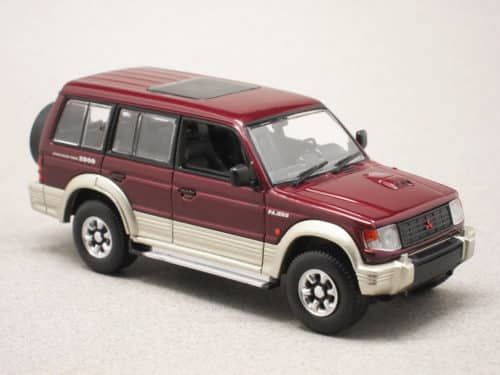
Out of stock
Mitsubishi Pajero LWB 1993 red (Maxichamps) 1:43

Mitsubishi Pajero SWB 1991 silver (Maxichamps) 1:43

Mitsubishi Pajero SWB 1991 black (Maxichamps) 1:43

In stock
Mitsubishi Lancer Celeste yellow (First:43) 1:43
The famous Mitsubishi Lancer saga starts in 1973. From 1975, this very first generation is complemented by a variant whose body is specific, but attached to the Lancer range. Its name is Lancer Celeste or, depending on markets, Colt Celeste, or even simply Celeste. Here we have the Japanese coupe variant.
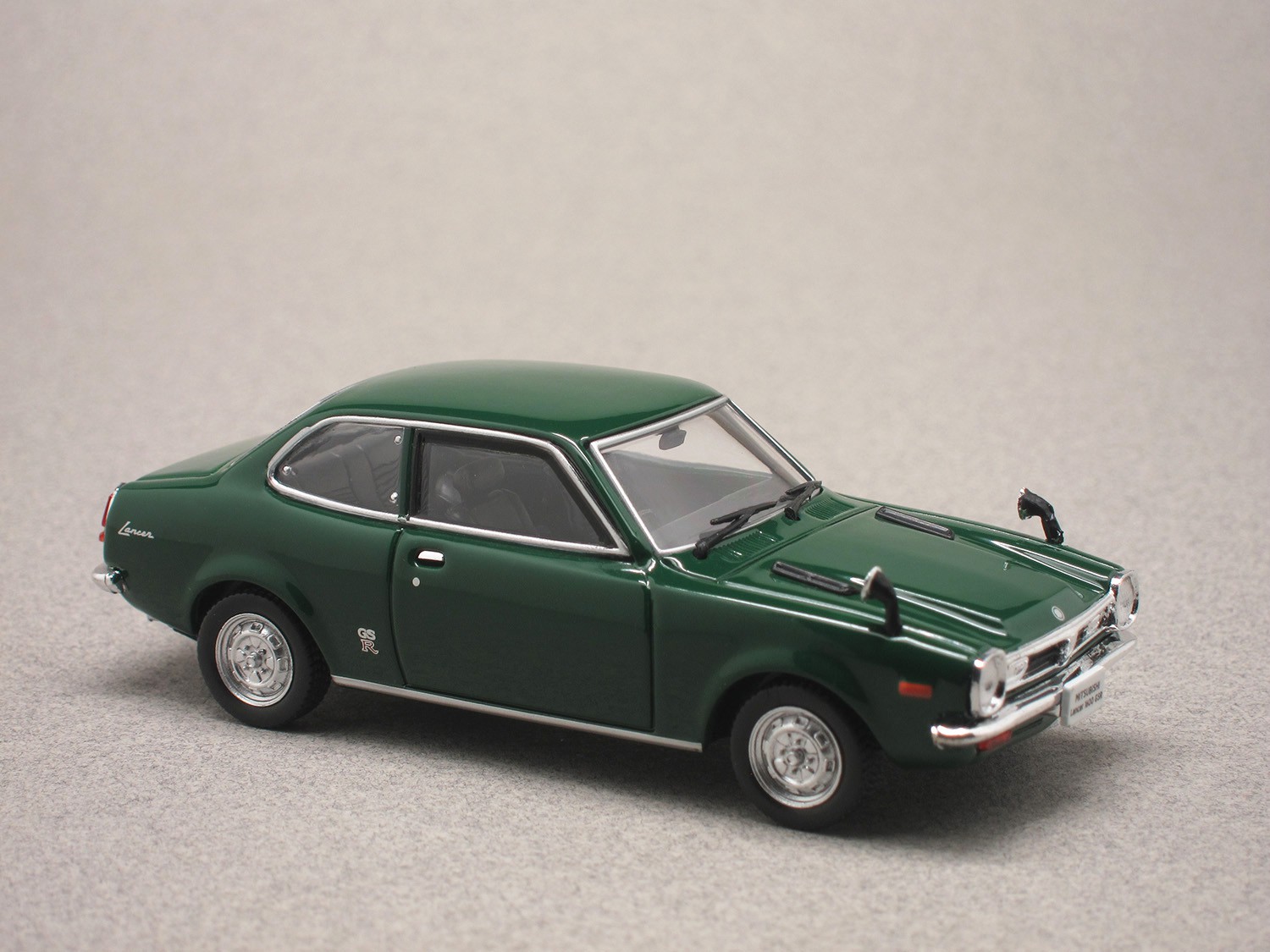
In stock
Mitsubishi Lancer 1600 GS-R 1973 (Norev) 1:43
The first-gen Lancer was launched to expand the Mitsubishi range in early 1973. At the time, this rear-wheel drive compact sedan was just 4 metre/157 in.-long, smaller than the Galant. Several bodies were available: two 2 or 4-door sedans and an estate, while this sportier GS-R version, released at the end of 1973, was only available with two doors and received a 1.6-litre engine.

In stock
Mitsubishi Lancer GSR Evo (Whitebox) 1:43
At the end of 1992, the Lancer Evolution succeeds the Galant VR-4 at the World Rally Championship. Its road-going version, needed to get a racing homologation, has become a classic of its kind. This first-gen Evo (here the GSR trim level) was replaced in early 1994 by the Evo II, recognizable by its front flap under the spoiler and whose turbo 2-litre develops 260 hp instead of 250.

In stock
Mitsubishi Jeep J30 (First:43) 1:43
Before Mitsubishi developped its own 4x4 (the Pajero, whose origins date back to 1982), the Japanese automaker first manufactured, under license and as soon as 1953, the Jeep Willys. Mitsubishi produced the 4x4 until 1998, and updated it with its own developments. Here we have a J30-type Station Wagon based on the longest of the three wheelbases available and dated 1961.

In stock
Mitsubishi Jeep J30 (First:43) 1:43
Avant que Mitsubishi ne développe son propre 4x4, le Pajero dont les origines remontent à 1982, le constructeur japonais a d’abord fabriqué, sous licence et dès 1953, la Willys Jeep. Mitsubishi produira ce 4x4 jusqu’en 1998, lui apportant ses propres évolutions. Il s’agit ici d’un Station Wagon type J30 élaboré sur le plus long des trois empattements et daté de 1961.
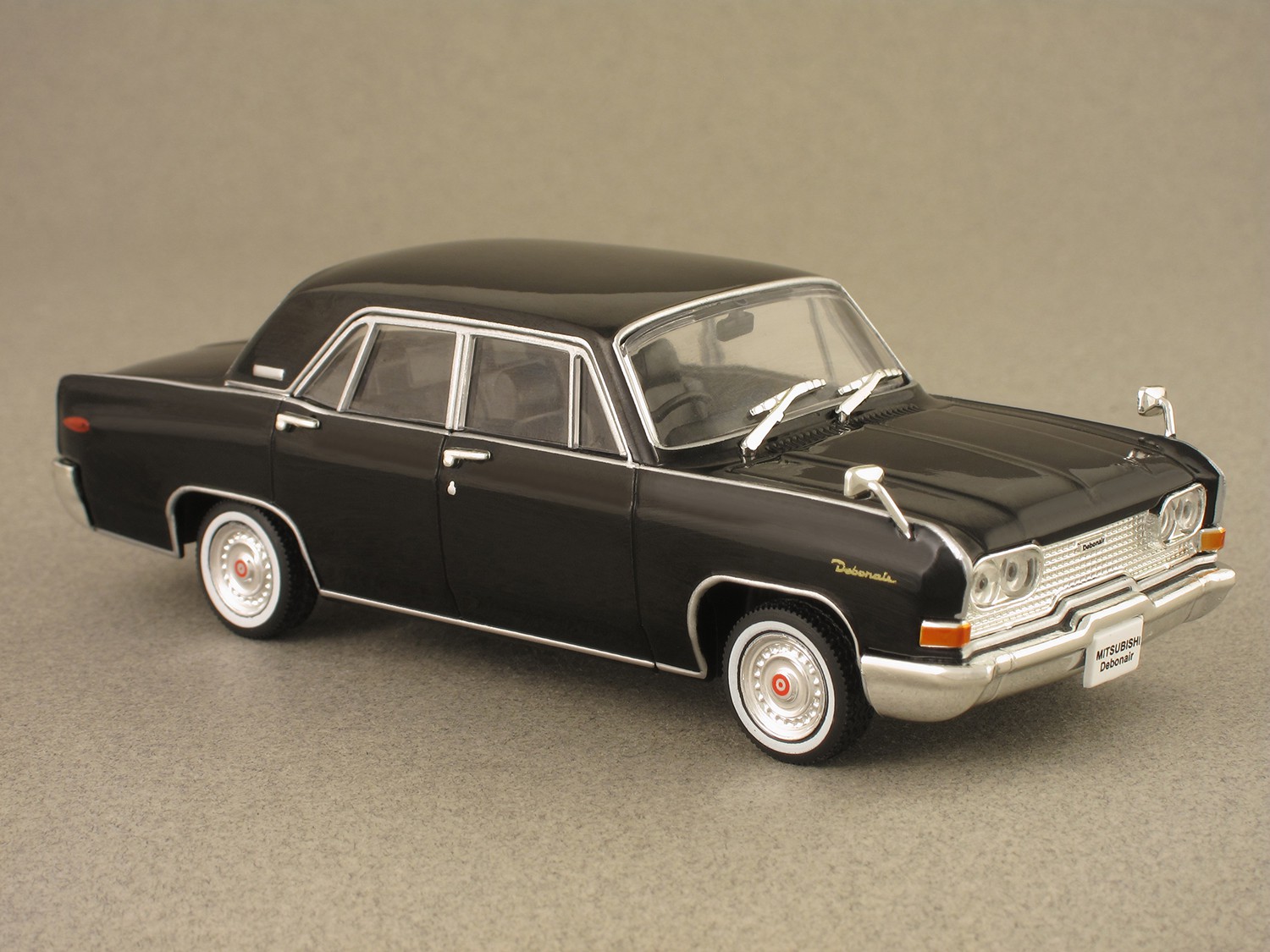
In stock
Mitsubishi Debonair (First:43) 1:43
This sedan launched in October 1963 received almost no aesthetic change until its production was discontinued in 1986. This Mitsubishi can be compared to the Toyota Century, in a lower category: the Debonair "only" measures 4.67 m/184 in.-long and is equipped with a 2-litre 6-cylinder (initially developing 105 hp), whereas the Toyota, released in 1967, received a V8 at the time.
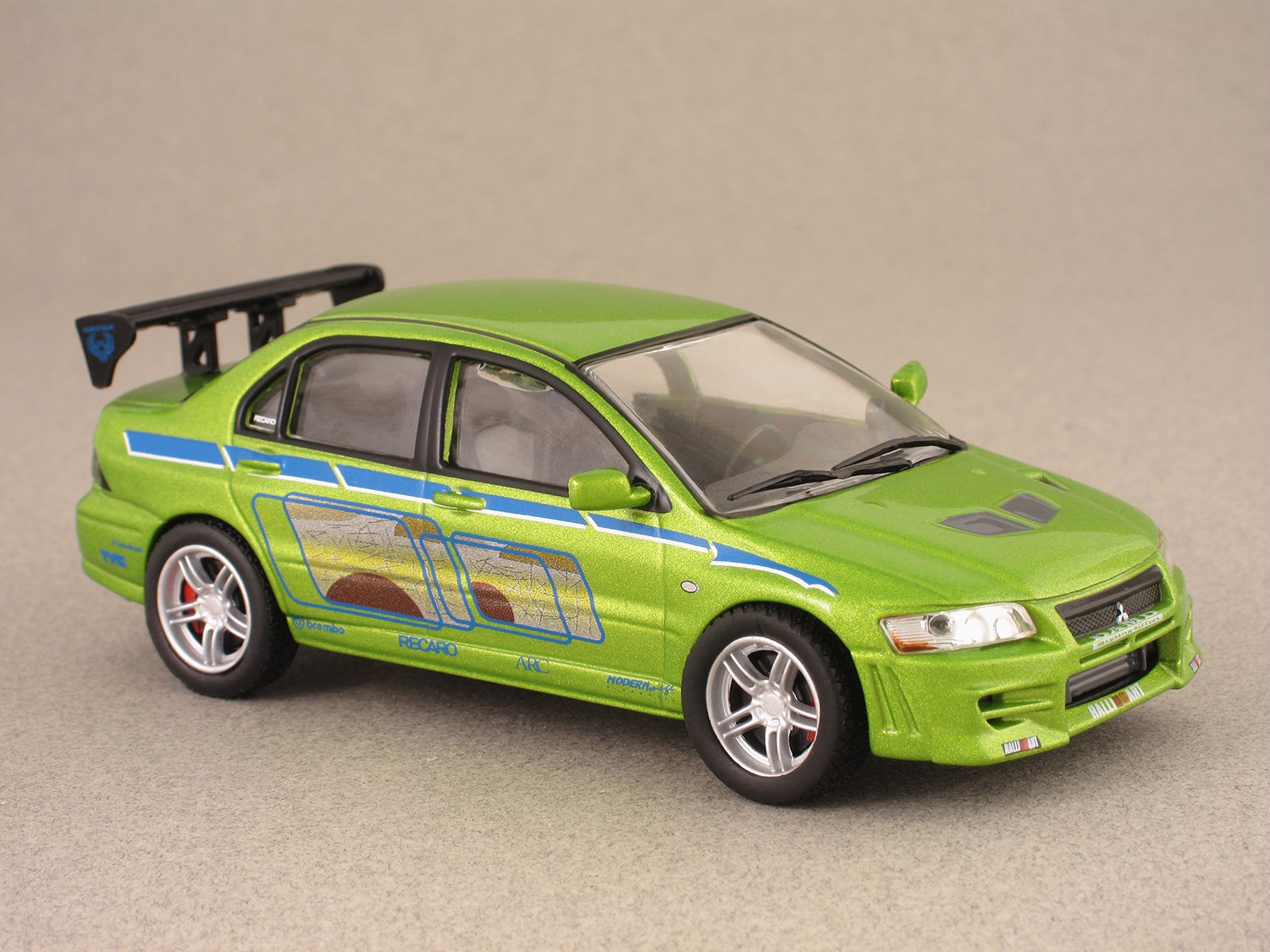
In stock
Mitsu. Lancer Evo VII Fast & Furious (Greenlight) 1:43
The Lancer is a classic among compact sports cars of the 1990s and 2000s. Very exclusive versions are homologated, on the basis of which rally cars are built. This four-wheel drive EVO VII was launched in 2001. Its chassis is upgraded, compared to its predecessor. The model we have here appears in the second movie of the Fast and Furious series, "2 Fast 2 Furious," released in 2003.
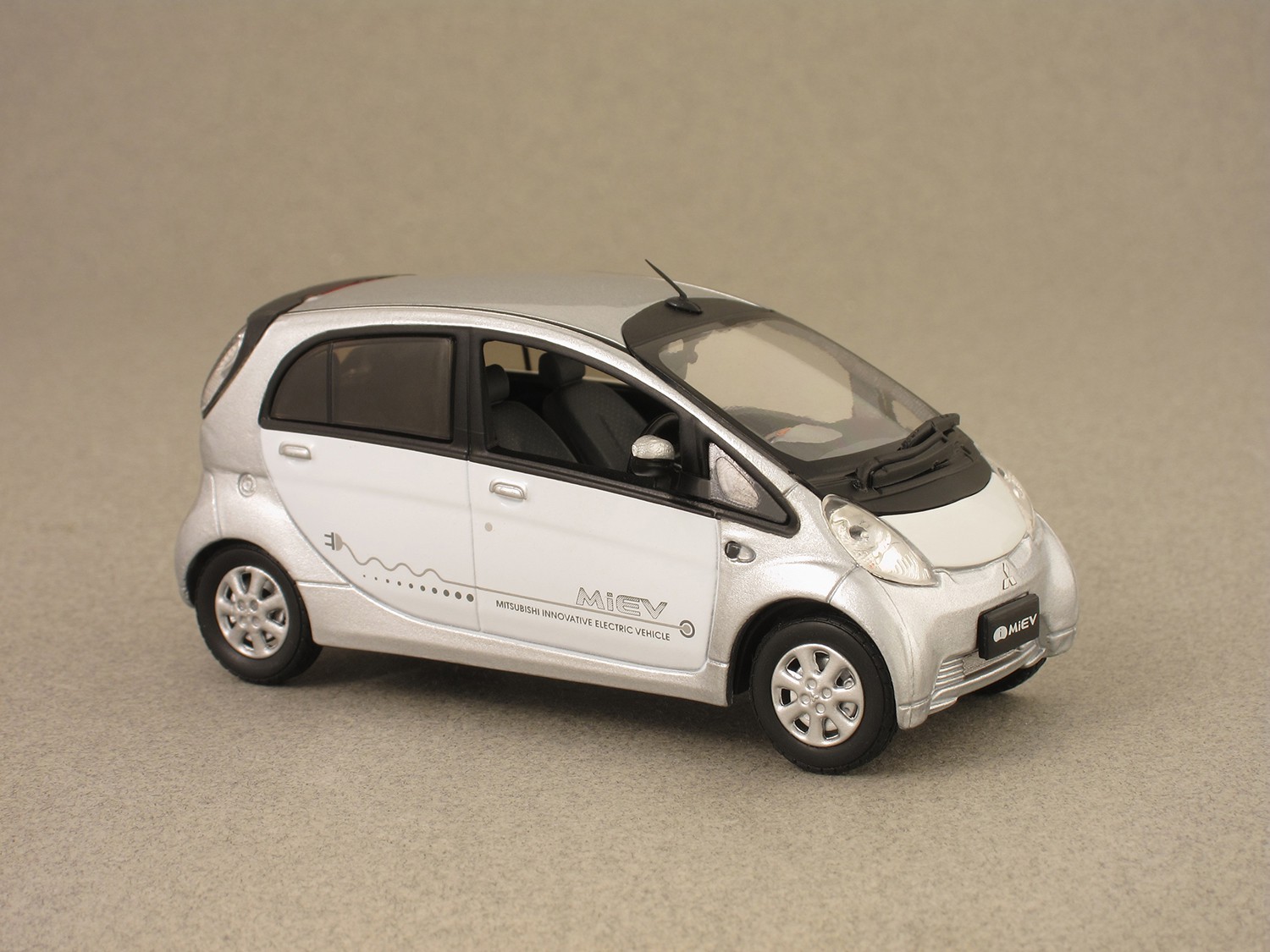
In stock
Mitsubishi iMiev (Vitesse) 1:43
The Mitsubishi i equipped with a rear-mounted combustion engine was launched in January 2006 in Japan. The fully electric version was released in 2008 and wears the name i-MiEV. At the end of 2010, Peugeot and Citroën integrated the same model in the respective ranges, where they are called iOn C-Zero. Mitsubishi produces all these models in Japan. Vitesse also offers the "standard" i.
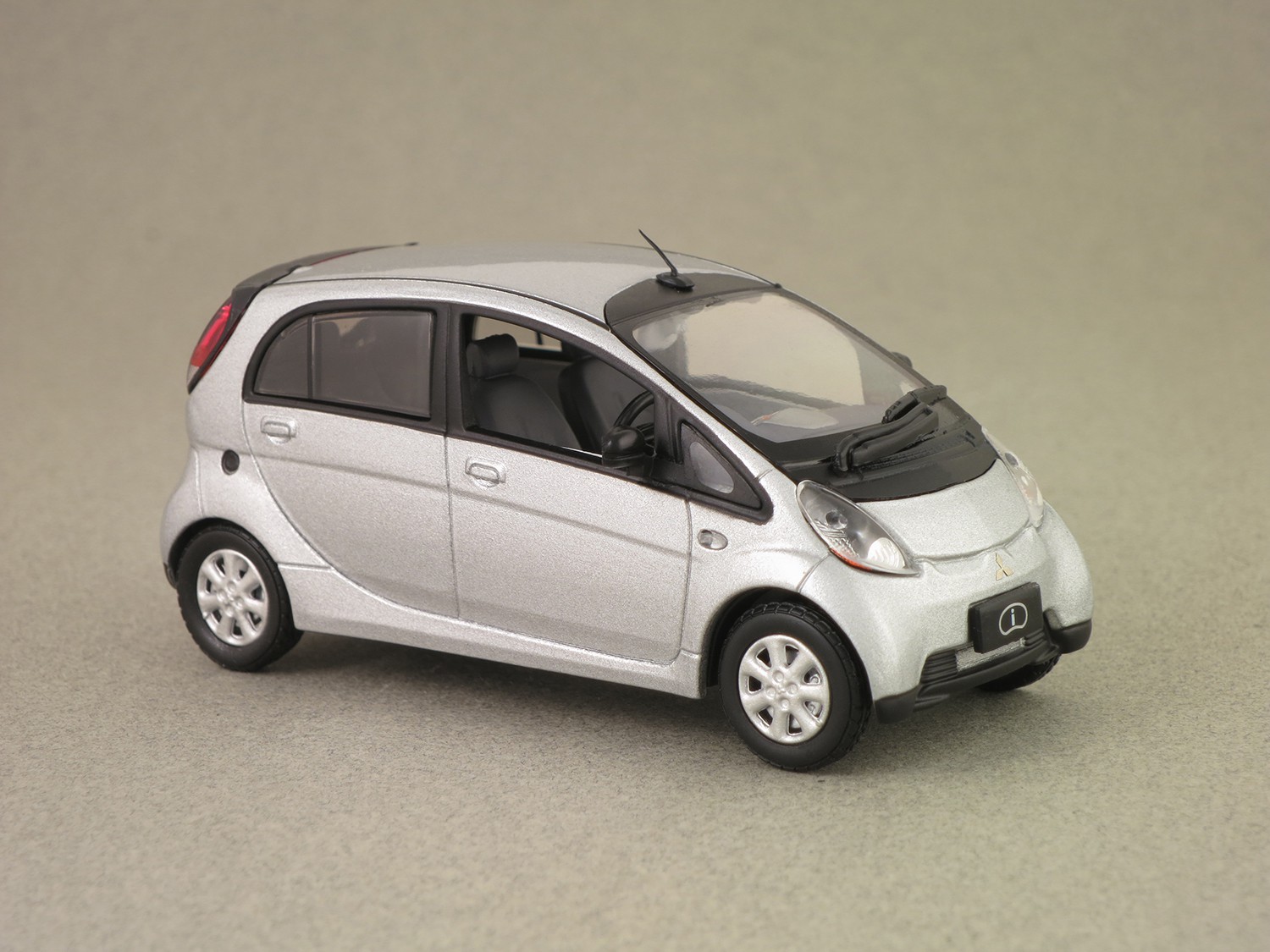
In stock
Mitsubishi i silver (Vitesse) 1:43
The only “i” available in Europe since 2010 is the electric version, called i-Miev. But this rear-wheel drive was already an old story in Japan, equipped with a combustion 3-cylinder engine since 2006. Vitesse reproduced the small Mitsubishi, while Norev reproduced its French clones, the Citroën C-Zero and Peugeot iOn electric. In red or grey on Minicarweb.
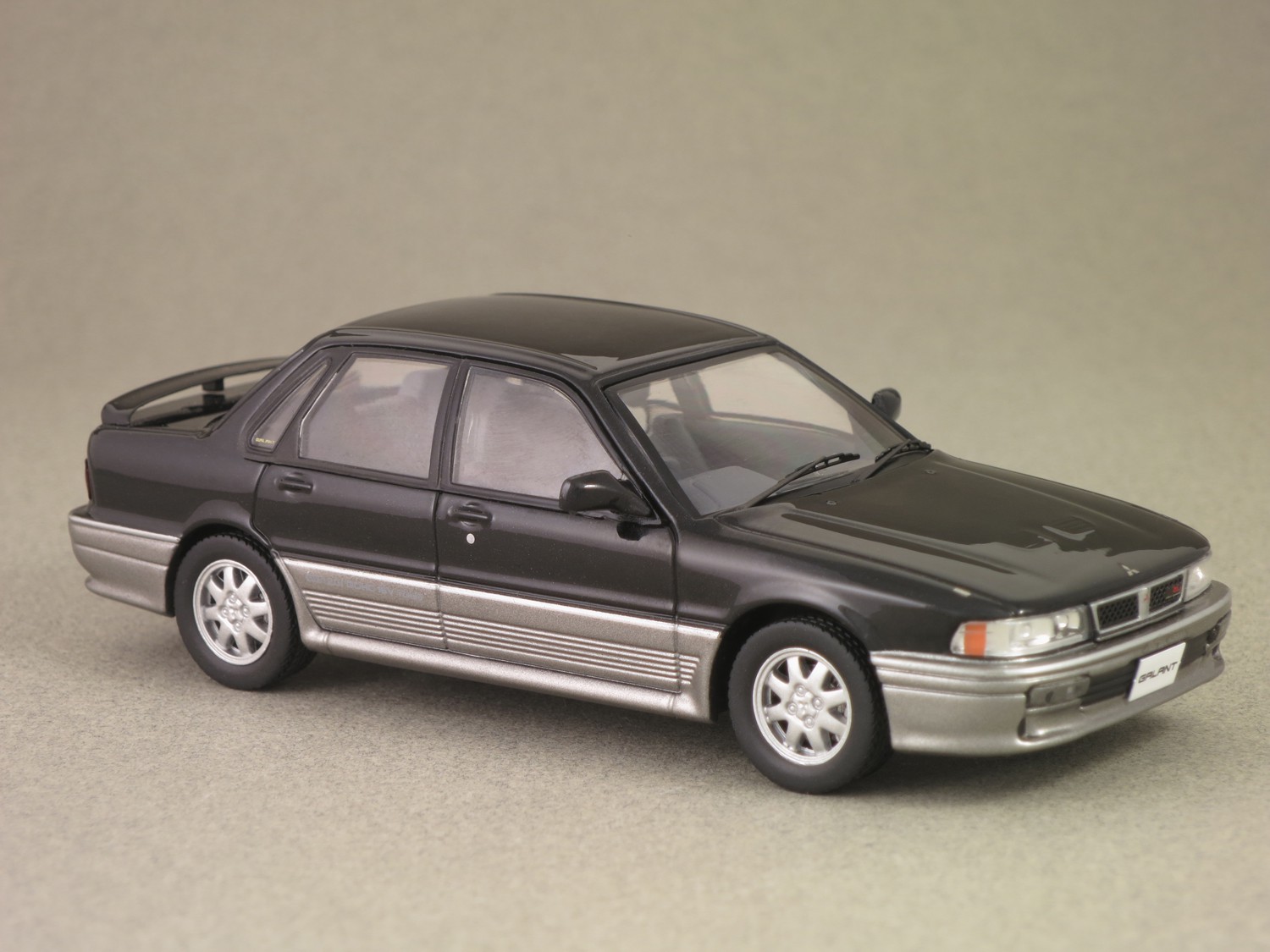
In stock
Mitsubishi Galant VR-4 1990 (IXO) 1:43
The technology of the sixth-generation Galant, unveiled at the end of 1987, was very advanced in this VR-4 version: ABS, turbo engine with 4 valves per cylinder, and active drive chassis with four-wheel steering. In 1989 the power of the VR-4 was increased from 205 to 220 hp, then later to 240 hp in some markets in October 1990. The latter is reproduced here, with air intakes on the bonnet.
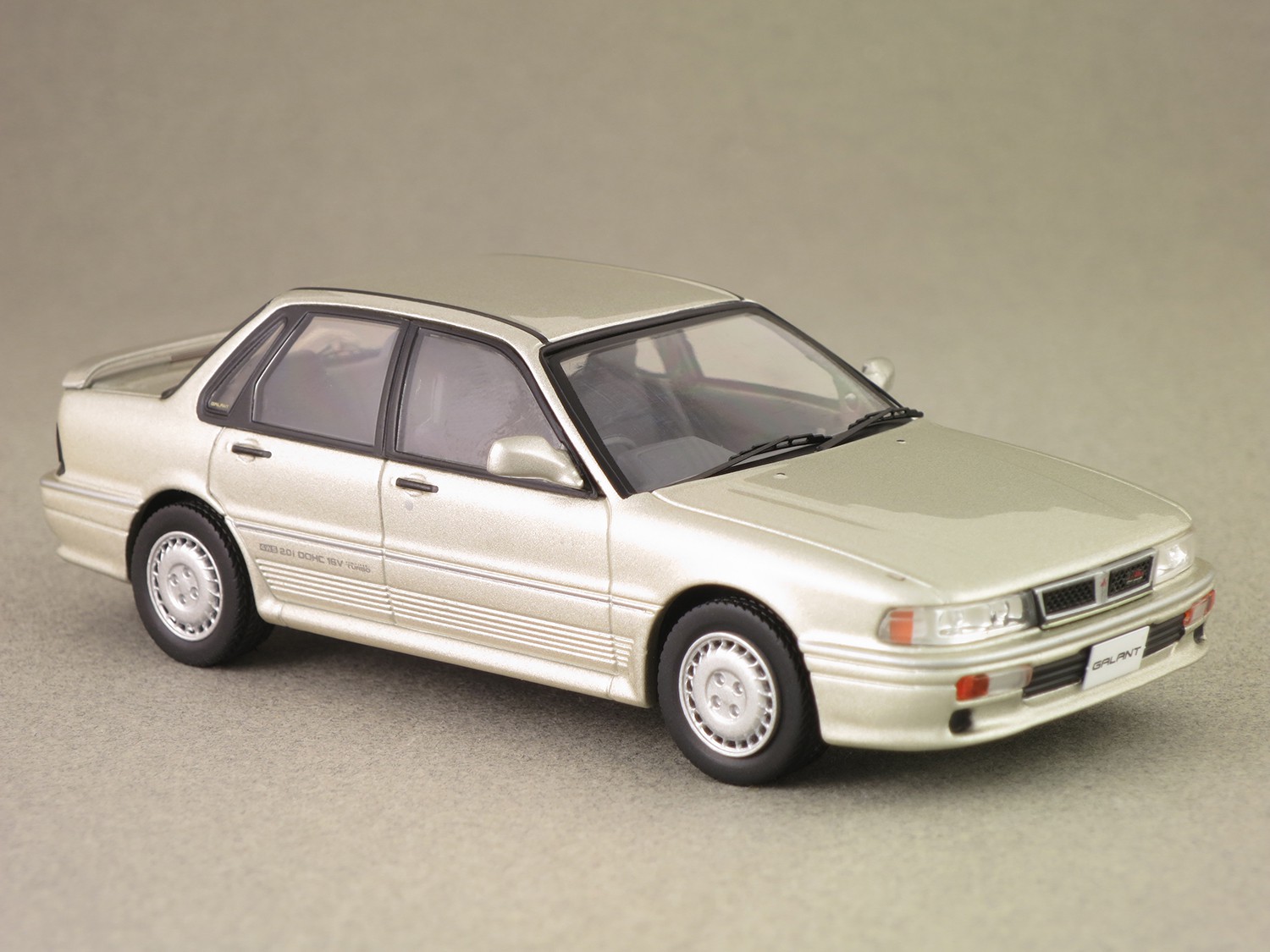
In stock
Mitsubishi Galant VR-4 1987 (IXO) 1:43
The technology of the sixth-generation Galant, unveiled at the 1987 Tokyo Motor Show, was very advanced in this VR-4 version: ABS, turbocharged engine with 4 valves per cylinder (205 hp), and active drive chassis with four-wheel steering. It was elected car of the year in Japan in 1988 and imported car of the year in the U.S. in 1988.
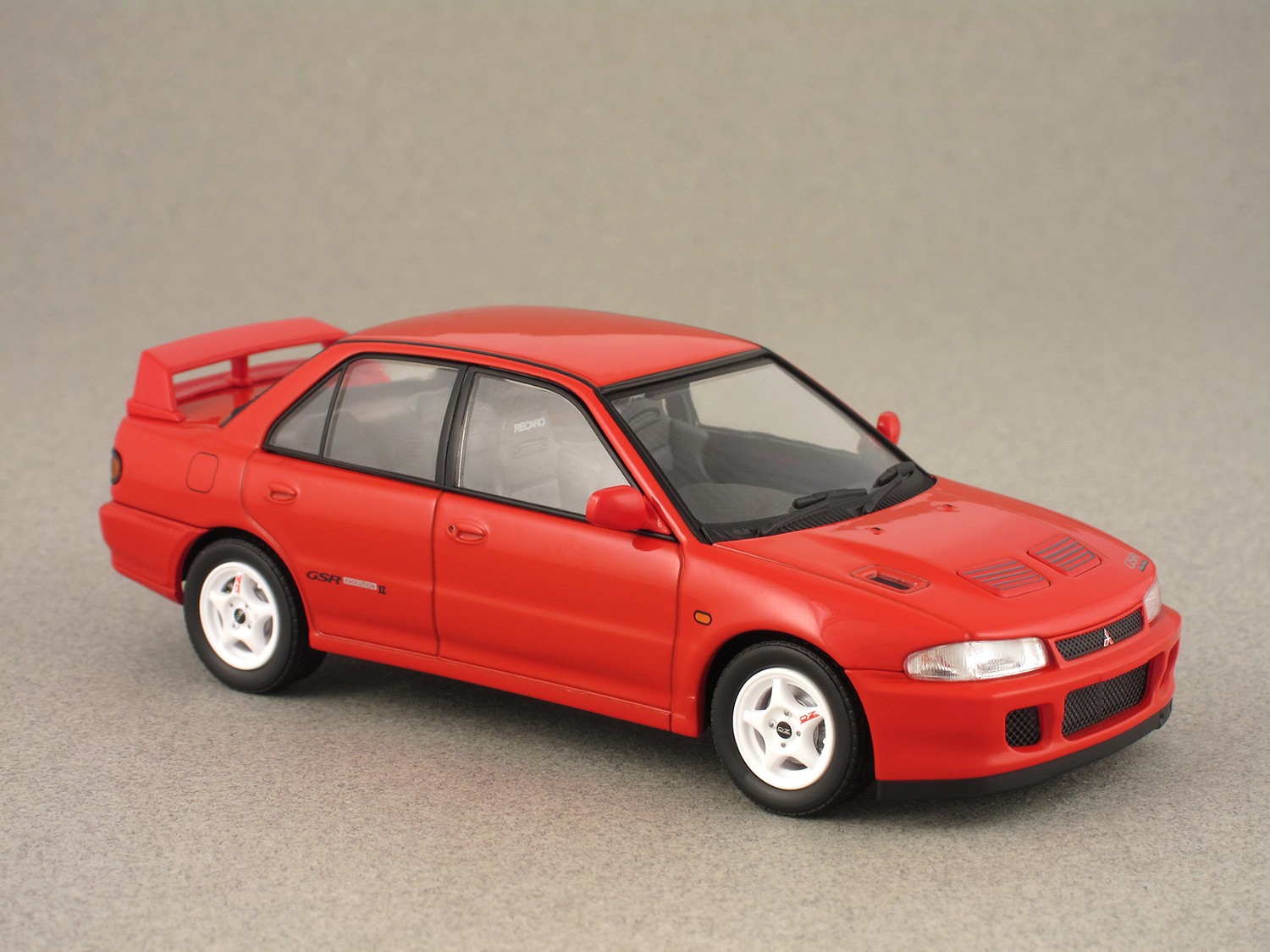
In stock
Mitsubishi Lancer GSR Evo II red (HPI Mirage) 1:43
In 1992, the Lancer Evolution succeeded the Galant VR-4 in the World Rally Championship. To obtain race registration, Mitsubishi needed a road version, which became a classic. This second version was launched in December 1993. Note the flap under the spoiler… The chassis evolved and the 2-liter turbo increased from 250 to 260 hp. Available in grey, in white or red.

In stock
Mitsubishi Lancer GSR Evo II grey (HPI Mirage) 1:43
In 1992, the Lancer Evolution succeeded the Galant VR-4 in the World Rally Championship. To obtain race registration, Mitsubishi needed a road version, which became a classic. This second version was launched in December 1993. Note the flap under the spoiler… The chassis evolved and the 2-liter turbo increased from 250 to 260 hp. Available in grey, in white or red.




